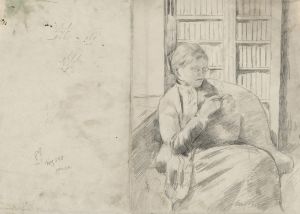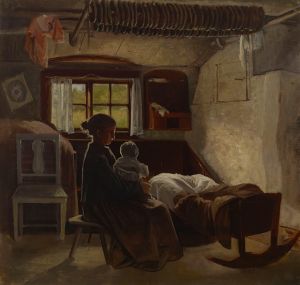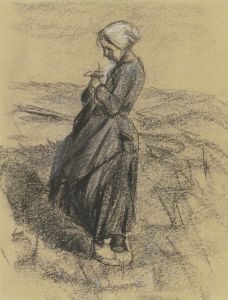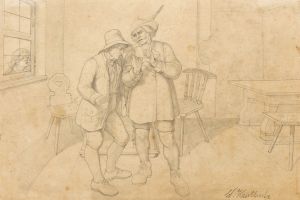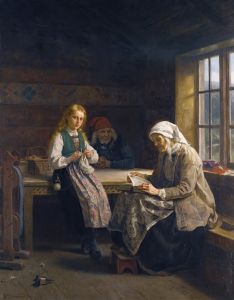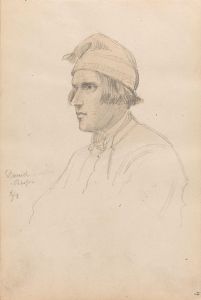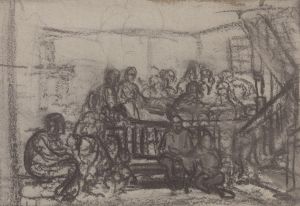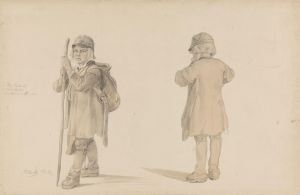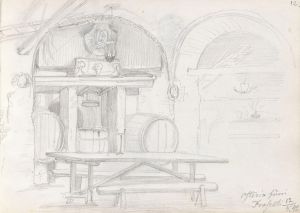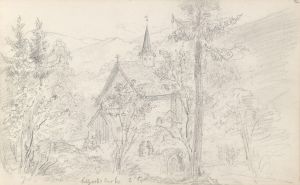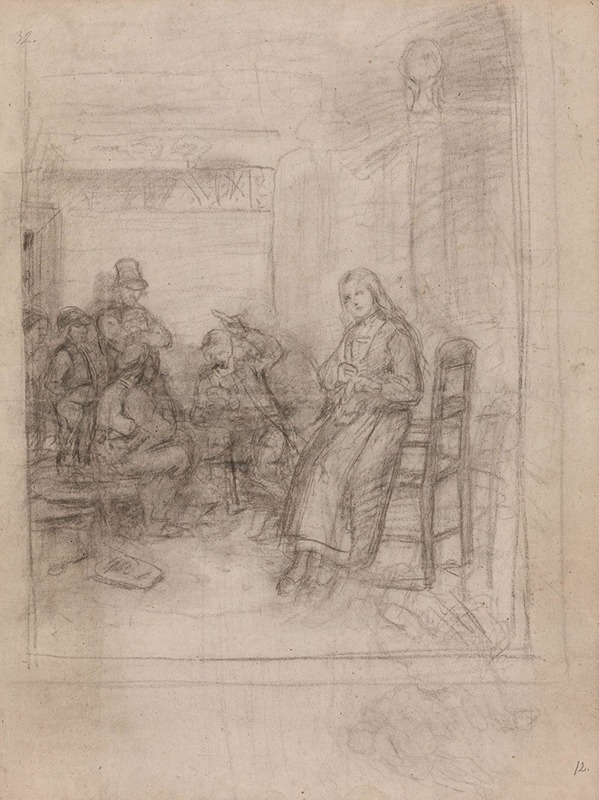
Interior with Card Players and Young Woman Knitting
A hand-painted replica of Adolph Tidemand’s masterpiece Interior with Card Players and Young Woman Knitting, meticulously crafted by professional artists to capture the true essence of the original. Each piece is created with museum-quality canvas and rare mineral pigments, carefully painted by experienced artists with delicate brushstrokes and rich, layered colors to perfectly recreate the texture of the original artwork. Unlike machine-printed reproductions, this hand-painted version brings the painting to life, infused with the artist’s emotions and skill in every stroke. Whether for personal collection or home decoration, it instantly elevates the artistic atmosphere of any space.
Adolph Tidemand was a prominent Norwegian painter in the 19th century, known for his detailed and culturally rich depictions of Norwegian life and traditions. One of his notable works is "Interior with Card Players and Young Woman Knitting," which exemplifies his focus on everyday scenes and the cultural practices of his time.
Adolph Tidemand was born on August 14, 1814, in Mandal, Norway. He studied at the Academy of Art in Copenhagen from 1832 to 1837 and later continued his studies in Düsseldorf, Germany, which was a significant center for art education at the time. Tidemand became associated with the Düsseldorf school of painting, known for its detailed and realistic style, which greatly influenced his artistic development.
"Interior with Card Players and Young Woman Knitting" is a genre painting, a category that Tidemand frequently explored. Genre paintings typically depict scenes from everyday life, capturing ordinary people engaged in common activities. This particular painting reflects Tidemand's interest in Norwegian culture and domestic life. It portrays a cozy interior scene where a group of men are engaged in a card game, while a young woman sits nearby, absorbed in her knitting. The setting is likely a traditional Norwegian home, as suggested by the rustic furnishings and the attire of the figures.
Tidemand's attention to detail is evident in the painting's composition. The figures are rendered with care, their expressions and postures conveying a sense of concentration and camaraderie. The warm, muted color palette adds to the intimate atmosphere of the scene, inviting viewers to observe the quiet moments of daily life. The depiction of the young woman knitting introduces a sense of tranquility and balance to the composition, contrasting with the more dynamic activity of the card players.
Throughout his career, Tidemand was deeply committed to documenting Norwegian culture and traditions. His works often served as visual records of a way of life that was rapidly changing due to industrialization and modernization. By capturing these scenes, Tidemand contributed to a broader understanding and appreciation of Norway's cultural heritage.
"Interior with Card Players and Young Woman Knitting" is a testament to Tidemand's skill in portraying the nuances of human interaction and the subtleties of domestic life. His ability to infuse everyday scenes with warmth and authenticity has made his work enduringly popular. Today, Tidemand is celebrated as one of Norway's most important painters, and his works continue to be studied and admired for their historical and cultural significance.
The painting is part of Tidemand's broader oeuvre, which includes other well-known works such as "Haugianerne" (The Haugeans) and "Brudeferden i Hardanger" (The Bridal Procession in Hardanger), the latter being a collaboration with fellow artist Hans Gude. These works, like "Interior with Card Players and Young Woman Knitting," reflect Tidemand's dedication to capturing the spirit of Norwegian life and his mastery of the genre painting style.
In summary, "Interior with Card Players and Young Woman Knitting" is a fine example of Adolph Tidemand's work, showcasing his talent for depicting everyday life with authenticity and warmth. Through his art, Tidemand has left a lasting legacy that continues to offer insights into the cultural and social fabric of 19th-century Norway.





